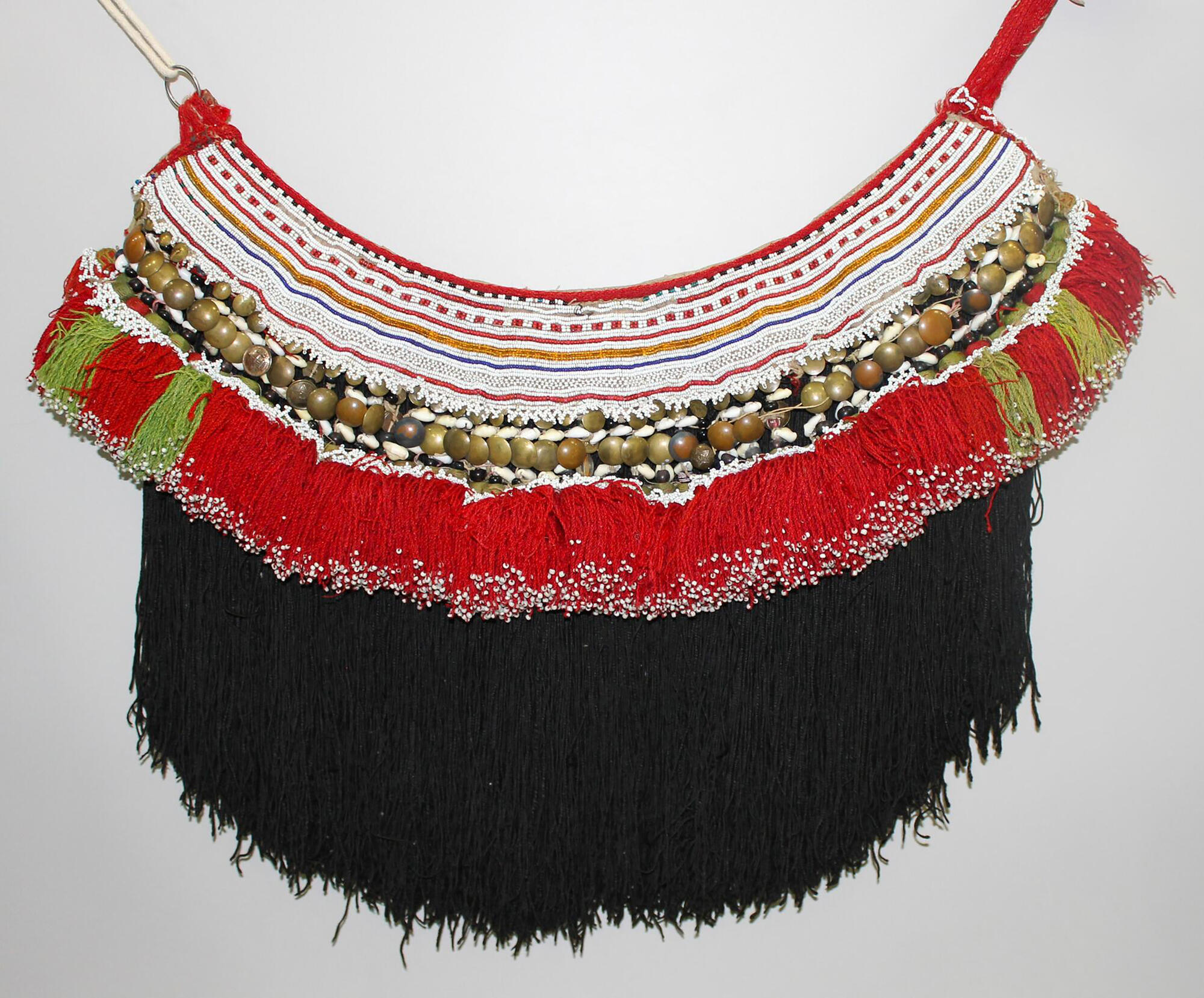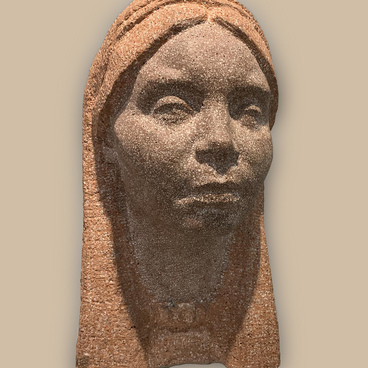A pulai is an expressive and bright highlight in the Erzya costume. The heavy woolen tassels of the pulai swayed in the rhythm of a woman’s movements, enlivening the image and making the silhouette of the figure especially soft. Girls began to wear a pulai from the age of 13–14 years to signify the transition from one age group to another. When this ornament appeared in a teenage girl’s costume it meant her coming of age and approaching the age of marriage.
There are no accidental details in the folk costume, each item was endowed with a certain meaning and fulfilled one or another function. The pulai in the Erzya costume is not only a marker, testifying to the maturity of a teenage girl, but also an expression of folk ideas about beauty. This ornament emphasized the figure of an Erzya girl, promoting the moral and aesthetic ideals of the people.
A pulai was also a piece of costume that kept the body warm because it was made of woolen threads. It weighed from three to five kilograms, and on holidays women wore two pulais — a daily and a festive one. The daily version consisted only of black tassels, the festive one — tsyoko pulogai — consisted of a short red fringe with the ends decorated with white beads or woven beaded netting. In later times, the once separate elements that made up the festive version of a pulai merged into a single-piece decoration. The ornament shown in the photos is a festive version.
A pulai was an authentic and obligatory accessory of the Erzya costume, which was worn over the shirt. The concept of ethics and morals required that this piece be obligatory in a woman’s costume. A Mordovian woman could not appear in the society of men without a pulai, she even toiled in the fields with it on. The absence of a pulai in a costume of an Erzya woman meant that she did not observe the norms accepted in the rural community, did not respect traditions and moral principles. Women appearing in the society of fellow villagers without this ornament were strongly criticized. That is why this ornament was an obligatory item in folk costume.
The collection of Stepan Erzia Museum includes a number of Erzya hip adornments. Of particular interest are the pulais of the eastern group (Kochkurovsky, Bolshebereznikovsky, Dubensky, Ardatovsky districts of Mordovia, bordering districts of the Ulyanovsk region and Chuvashia). In this region they are especially puffed, with long black fringes, decorated with a wide belt of beads, rows of copper buttons, cowrie shells, tightly stitched red and green short tassels with beaded strings.
There are no accidental details in the folk costume, each item was endowed with a certain meaning and fulfilled one or another function. The pulai in the Erzya costume is not only a marker, testifying to the maturity of a teenage girl, but also an expression of folk ideas about beauty. This ornament emphasized the figure of an Erzya girl, promoting the moral and aesthetic ideals of the people.
A pulai was also a piece of costume that kept the body warm because it was made of woolen threads. It weighed from three to five kilograms, and on holidays women wore two pulais — a daily and a festive one. The daily version consisted only of black tassels, the festive one — tsyoko pulogai — consisted of a short red fringe with the ends decorated with white beads or woven beaded netting. In later times, the once separate elements that made up the festive version of a pulai merged into a single-piece decoration. The ornament shown in the photos is a festive version.
A pulai was an authentic and obligatory accessory of the Erzya costume, which was worn over the shirt. The concept of ethics and morals required that this piece be obligatory in a woman’s costume. A Mordovian woman could not appear in the society of men without a pulai, she even toiled in the fields with it on. The absence of a pulai in a costume of an Erzya woman meant that she did not observe the norms accepted in the rural community, did not respect traditions and moral principles. Women appearing in the society of fellow villagers without this ornament were strongly criticized. That is why this ornament was an obligatory item in folk costume.
The collection of Stepan Erzia Museum includes a number of Erzya hip adornments. Of particular interest are the pulais of the eastern group (Kochkurovsky, Bolshebereznikovsky, Dubensky, Ardatovsky districts of Mordovia, bordering districts of the Ulyanovsk region and Chuvashia). In this region they are especially puffed, with long black fringes, decorated with a wide belt of beads, rows of copper buttons, cowrie shells, tightly stitched red and green short tassels with beaded strings.




